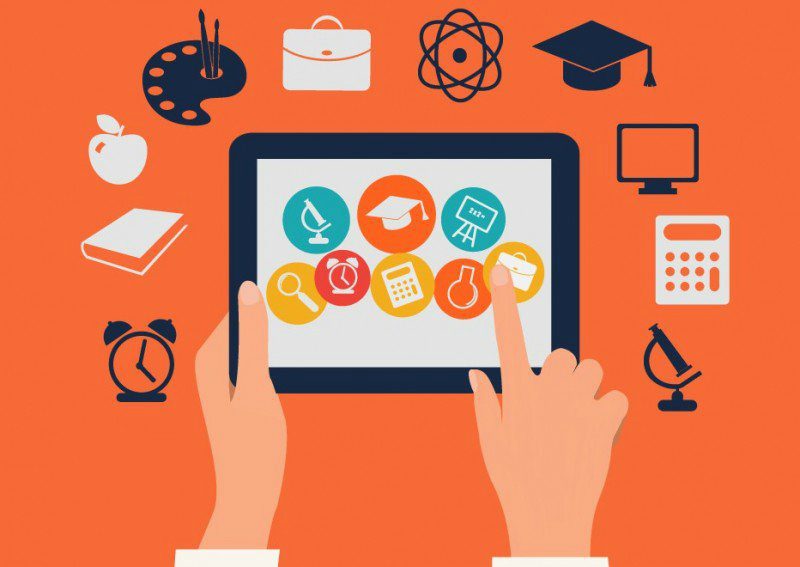How mLearning Can Enhance Education In Developing Nations
The ubiquitous nature of mobile devices becomes evident when you look at the results of the TIME Qualcomm survey which said that 84% of the respondents could not go a single day without a cell phone in their hand and 44% would leave their wallets at home but not their cell phones.
Of the 7 billion on the planet, over 6 billion have access to a working mobile phone. To put this number in perspective, only 4.5 billion people have access to toilets.
To better understand how technology can enable reading (a baby step to mLearning), UNESCO conducted a survey to learn about the habits, preferences, and attitudes of mobile readers. Specifically, the survey was designed to discover who reads on mobile phones and why; if and how mobile reading changes reading habits and attitudes towards reading; what people read and want to read on their mobile phones; what the central barriers are to mobile reading; and what factors predict people’s intentions to read and keep reading on mobile phones.
The survey was completed by over 4,000 people in seven countries (Ethiopia, Ghana, India, Kenya, Nigeria, Pakistan, and Zimbabwe) and supported by qualitative interviews with numerous respondents. The depth and breadth of data collection make this study the most comprehensive investigation of mobile reading in developing countries to date.
From the study, it appears that people read more when they read on mobile devices, that they enjoy reading more, and that people commonly read books and stories to children from mobile devices. The study shows that mobile reading represents a promising, if still underutilized, pathway to text. If every mobile phone could be transformed –easily and cheaply– into a library brimming with books, access to text would cease to be such a daunting hurdle to literacy.
mLearning brings unique advantages when compared with other mediums, the prominent being the ability to provide highly personalized attention 24/7 to all students. The time spent per session is less in mLearning and it aims at completing small chunks of 3-5 minutes. The advantage of accessing a module while waiting for a bus or in a coffee shop provides huge ease of use. Pan India mobile data usage has grown YOY 74% in the year 2014. This suggests people living in smaller towns and cities can get access to the best possible learning resources from across the world, at a very affordable price. As per TRAI and census of India data, cell phone penetration in India stands at nearly 78 connections per 100 individuals which is likely to grow heavily in the coming years creating the right launch pad for m-learning solutions.
Presently, the market for mLearning products and services is estimated at USD 3.4 billion, a tiny fraction of the USD 4 trillion spent on education globally. Although mLearning is a nascent market, publishing houses, mobile network operators, and device manufacturers have been focusing on it for years. Commercial mLearning offerings could take one of many forms. A non-exhaustive list would potentially comprise:
- Educational e-books and courses accessed through portable devices.
- Learning Management Systems (LMSs) and authoring tools.
- Game or simulation-based learning tools.
- Adaptive assessment services.
- Test preparation support.
- Distance tutoring and homework support.
By 2020, it is expected that global spend on education would double to USD 8 trillion. mLearning may address up to USD 70 billion of this market through specialized product offerings and a growing market for devices coupled with a coordinated m-learning ecosystem for effective dissemination of knowledge.
The focus to provide universal access to mobile connectivity is necessary for mLearning in India. Successful implementation of Digital India becomes a prerequisite for provisioning of the mLearning backbone. Furthermore, the renewed focus of the government on NPTEL (National Programme on Technology Enhanced Learning) would also be a step in the right direction with respect to m-learning and technology enabled learning in large.
India’s online education market size is set to grow to $40 billion by 2017 from the current $20 billion. India has one of the largest education systems in the world with a network of more than 1 million schools and 18,000 higher education institutions. More than half of the country’s 1.2 billion population falls in the target market for education and related services. This includes all age groups, for beginners, school students, for the elderly citizens, and even for employee training or re-training purposes in both rural and urban areas – they are all an audience and beneficiary of this delivery mechanism.
In India (and every developing country), mLearning could provide last mile educational solutions without the hassle of physical infrastructure and availability of teachers. For the rural population, the biggest mLearning challenge would be customized material in a regional language. Grassroots institutions (like the anganwadis in India), NGOs, and local primary schools need to cooperate with providers in order to cross the language barrier in order to make the entire effort a useful one.
If the world puts its energy and resources behind the Global Goals by 2030 initiative, then an essential pillar of attaining Goal 4 (Quality Education) would have to be mLearning.








